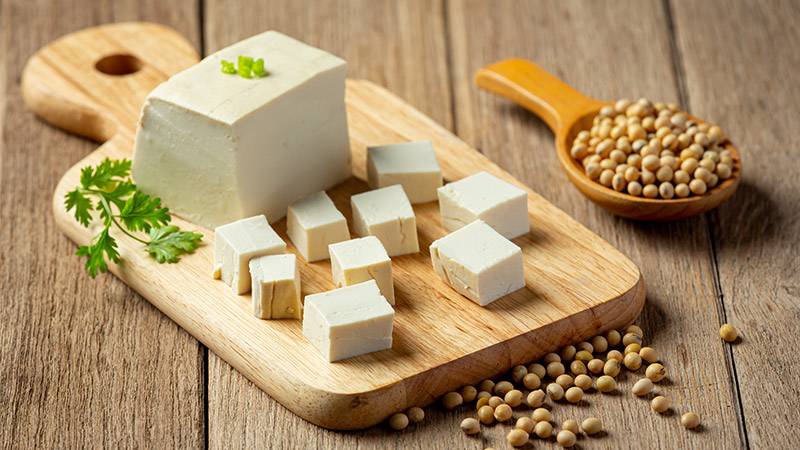Welcome to the intriguing world of tofu, a humble yet mighty hero in the realms of sustainable eating and veganism. As you navigate through the green waves of plant-based diets, you’ve likely encountered tofu, often hailed as a versatile and eco-friendly protein source.
But what exactly makes tofu a vegan superstar? Is it just about being a meat alternative, or is there more to this soy-based wonder?
Whether you’re a seasoned tofu enthusiast or a curious newcomer, let’s dive into the heart of tofu’s story, uncovering its vegan credentials and its pivotal role in a sustainable lifestyle. Stick around, and let’s unravel the tofu mystery together!
Is Tofu Vegan?
Absolutely, tofu is vegan. This plant-based protein powerhouse is crafted exclusively from soybeans, water, and a coagulant—typically a mineral salt like calcium sulfate or magnesium chloride. There’s nothing animal-derived in traditional tofu, making it a cornerstone in vegan cooking.
The journey of tofu from soybean to your plate is fascinatingly simple yet profound. It starts with soaking and grinding soybeans to create soy milk. This milk is then coagulated, separating into curds and whey, akin to the cheese-making process but without any dairy involvement. These curds are pressed into blocks, resulting in the tofu we find in stores.
There are some common misconceptions surrounding tofu. One is the belief that tofu production involves animal products or by-products, which is not the case. Another is the concern about additives.
While it’s true that some tofu brands may include additives for flavor or preservation, these are predominantly plant-based or synthetic and still fall within vegan guidelines. It’s always wise to read labels if you have specific dietary preferences or restrictions.
Nutrition experts and vegan advocates alike champion tofu for its high protein content and versatility. It’s a staple in a vegan lifestyle, not just for its nutritional value but also for its minimal environmental impact compared to animal proteins. Tofu offers a sustainable, eco-friendly food option for those committed to reducing their carbon footprint and supporting a dairy-free diet.
What Exactly is Tofu?
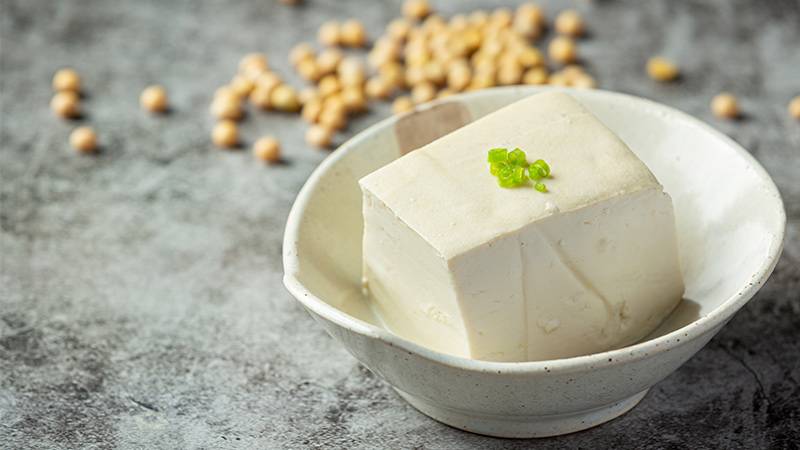
Tofu, often celebrated in the world of plant-based diets, has a rich history entwined with East Asian culinary traditions. Its origins trace back over 2,000 years in China, where it was discovered almost serendipitously.
Legend suggests that tofu was born when a cook accidentally mixed fresh soy milk with nigari, a natural coagulant. This happy accident led to the creation of a food that would become a cornerstone in Asian cuisine and, much later, a global vegan staple.
The production process of tofu, while simple, is a beautiful blend of tradition and culinary art. It begins with selecting high-quality soybeans, which are then soaked in water to soften.
This soaking is crucial as it prepares the beans for the next step: grinding. The soybeans are ground with water, creating a milky liquid known as soy milk. This soy milk is then heated, a critical step that affects the final texture of the tofu.
Next comes coagulation, the heart of tofu-making. Coagulants like calcium sulfate or magnesium chloride are added to the hot soy milk. This causes the protein and fats in the milk to curdle, forming soft white curds.
These curds are then gathered and pressed into molds, determining the final firmness of the tofu. The longer and more firmly the curds are pressed, the firmer the tofu becomes, leading to the various types available on the market, from silken to extra-firm.
Tofu’s journey from a humble bean to a versatile culinary ingredient is a testament to the ingenuity of ancient food practices. It’s not just a food item; it’s a cultural artifact, representing centuries of culinary history.
Today, tofu stands as a symbol of a sustainable, protein-rich food choice in vegan and vegetarian diets, celebrated for both its nutritional value and its minimal environmental impact. Its simplicity in ingredients and process makes tofu a unique, unprocessed food, aligning perfectly with the principles of clean, conscious eating.
Types of Tofu and Their Culinary Uses
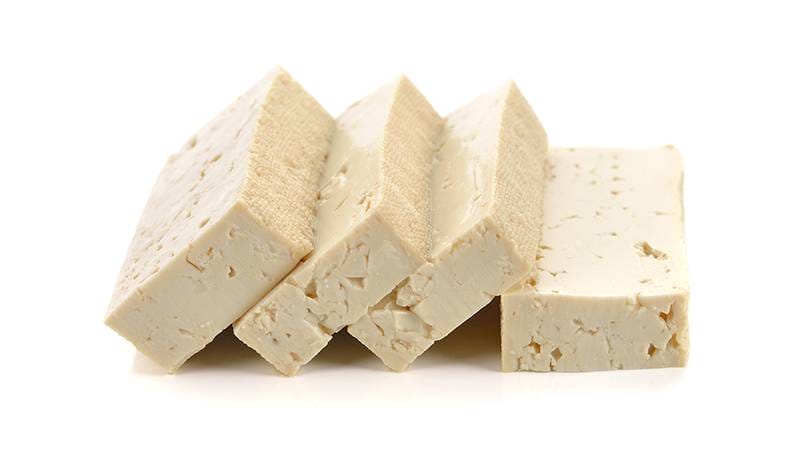
Tofu is not a one-size-fits-all ingredient. Its versatility in the kitchen is partly due to the different types available, each suited for specific culinary uses. Here’s a guide to understanding these varieties and how to incorporate them into your vegan cooking.
1. Silken Tofu
- Texture: Soft, smooth, and custard-like.
- Uses: Perfect for blending into smoothies, creamy sauces, or desserts. Silken tofu can be a dairy-free alternative in recipes that call for cream or eggs.
- Culinary Idea: Try it in vegan chocolate mousse or blend into a creamy salad dressing.
2. Soft Tofu
- Texture: Slightly firmer than silken but still delicate.
- Uses: Ideal for gently cooked dishes like soups or stews. It absorbs flavors well, making it a great addition to broths.
- Culinary Idea: Add it to miso soup or a gentle braise.
3. Medium Tofu
- Texture: A balance between soft and firm, with a bit more body.
- Uses: It's versatile - good for pan-frying or scrambling. Medium tofu holds up in stir-fries and can be crumbled for tofu scrambles.
- Culinary Idea: Use it in vegan scrambled eggs or lightly fry for a stir-fry.
4. Firm Tofu
- Texture: Holds shape well, slightly springy.
- Uses: Excellent for frying, baking, or grilling. Its texture makes it suitable for meat substitutes in recipes.
- Culinary Idea: Marinate and grill for a tofu steak or cube and add to a hearty curry.
5. Extra-Firm Tofu
- Texture: Very dense and holds up to vigorous cooking.
- Uses: The best choice for high-heat cooking like deep-frying or grilling. It's also great in dishes where you want tofu to maintain its shape.
- Culinary Idea: Cube for kebabs, or press and fry for crispy tofu bites.
6. Super-Firm Tofu
- Texture: Extremely dense and meaty.
- Uses: Requires little to no pressing and is excellent for dishes that need robust, chewy textures.
- Culinary Idea: Dice into small pieces for a vegan stir-fry or use as a ground meat substitute in tacos.
Health Benefits of Tofu
Tofu is more than just a versatile ingredient; it’s a nutritional treasure trove, particularly lauded in the vegan lifestyle for its high protein content. Let’s delve into the nutritional profile of this soy-based staple, highlighting its myriad health benefits.
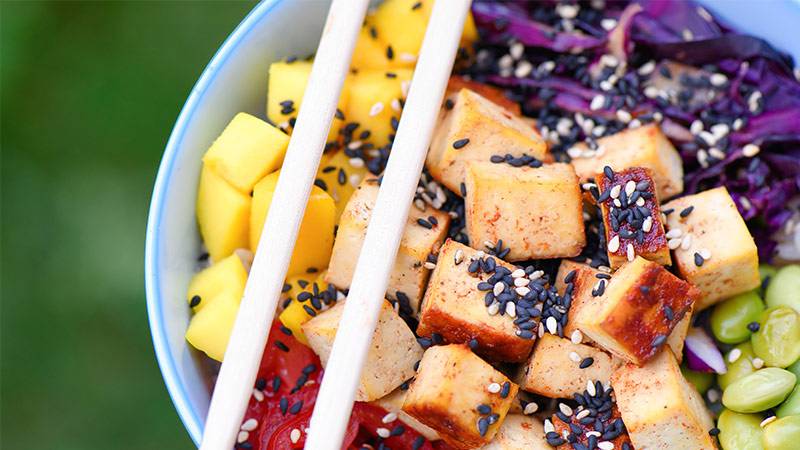
Protein-Rich Food
Tofu is an excellent source of complete protein, meaning it contains all nine essential amino acids. This makes it a crucial component of a plant-based diet, especially for those looking to maintain or build muscle mass without relying on animal proteins.
Minerals and Vitamins Galore
Tofu is rich in a variety of minerals, including calcium and magnesium, which are vital for bone health. It’s also a good source of iron, crucial for healthy blood and energy levels. Additionally, tofu contains small amounts of other nutrients like potassium, which aids in maintaining healthy blood pressure levels.
Low in Calories, High in Nutrients
Tofu offers a high nutrient density. This means you get more nutrients for fewer calories, making it an ideal food for weight management and overall health.
Heart-Healthy
Studies have shown that regular consumption of tofu can contribute to improved heart health. Its low saturated fat and cholesterol levels make it beneficial for maintaining healthy cholesterol levels and reducing the risk of heart disease.
Nutritional Chart of Tofu (Per 100g serving):
- Calories: 70-80
- Protein: 8-10g
- Total Fat: 4-5g
- Saturated Fat: 0.5-1g
- Carbohydrates: 1-3g
- Fiber: 0.5-2g
- Calcium: 130-200mg
- Iron: 1.5-2.5mg
- Magnesium: 20-30mg
- Potassium: 100-200mg
Environmental Impact of Tofu Production
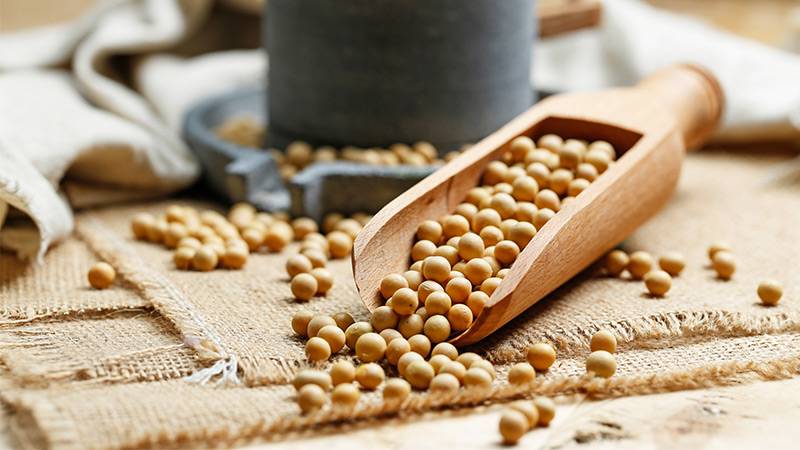
Embracing tofu in a plant-based diet isn’t just a win for health; it’s a significant stride towards environmental sustainability. The ecological footprint of tofu, especially when compared to animal-based proteins, is remarkably lower, making it a champion of eco-friendly foods.
Lower Greenhouse Gas Emissions
One of the most compelling arguments for tofu’s environmental friendliness is its substantially lower greenhouse gas emissions. Producing 1 kilogram of tofu generates about 2 kilograms of CO2 equivalent, while the same amount of beef can produce up to 27 kilograms of CO2 equivalent. This stark contrast highlights tofu’s role in reducing the impact of our diets on climate change.
Reduced Land and Water Use
Tofu production is much more efficient in terms of land and water use compared to animal proteins. For instance, producing soy for tofu requires far less land and water than raising cattle for beef. This efficiency contributes to conservation efforts and lowers the strain on natural resources.
Biodiversity Preservation
The soybeans used in tofu production are often grown in a more sustainable manner compared to the feed crops for livestock, which can lead to deforestation and loss of biodiversity. By choosing tofu, consumers can indirectly support agricultural practices that are more harmonious with nature.
Minimal Pollution
Animal farming is a major contributor to water and air pollution due to manure runoff and other waste products. In contrast, tofu production results in significantly lower pollution levels, aligning with the principles of sustainable eating.
Who Should Be Cautious with Tofu?
Tofu is a wholesome and nutritious component of a vegan diet, but like any food, it may not be suitable for everyone. Understanding potential dietary restrictions and allergies associated with tofu is important for maintaining optimal health.
Soy Allergies
Tofu, being a soy product, is a concern for individuals with soy allergies. Soy is one of the most common food allergens, and those allergic to it may experience symptoms ranging from mild (such as hives or itching) to severe (like anaphylaxis). If you have a known soy allergy, it’s crucial to avoid tofu and other soy-based products.

Hormonal Concerns
Some individuals worry about the phytoestrogens in tofu and other soy products. Phytoestrogens are plant compounds that mimic estrogen, though their effects in the human body are much weaker. Most research indicates that moderate tofu consumption is safe and does not disrupt hormone levels significantly. However, individuals with estrogen-sensitive conditions, such as certain breast cancers, might be advised by their healthcare providers to limit soy intake.
Digestive Sensitivities
People with sensitive digestive systems may experience discomfort when consuming tofu. It can cause bloating and gas in some individuals, owing to the presence of oligosaccharides, a type of sugar found in soybeans.

Infants and Soy-Based Formulas
While tofu is a healthy food for adults and older children, infants with specific dietary needs or allergies should be monitored closely. Soy-based formulas are an alternative to dairy, but parents should consult with pediatricians to ensure these are suitable for their babies.
Can You Eat Raw Tofu?
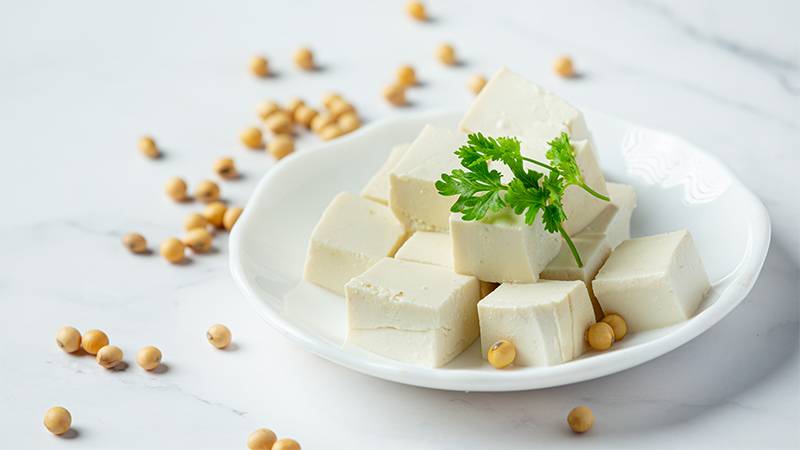
Absolutely, you can eat tofu raw! For those exploring vegan cooking or just seeking convenient, healthy food options, raw tofu is not only safe but also nutritious. It’s a staple in many vegan diets for its ease and versatility.
Safety First
Tofu is pre-cooked during its manufacturing process, which means it’s safe to consume straight out of the package. There’s no need for additional cooking unless you’re after a specific texture or flavor.
Nutritional Benefits Intact
Eating tofu raw preserves its natural nutritional profile. You’ll get all the protein, minerals like calcium and iron, and vitamins in their unaltered form. It’s a great way to ensure you’re getting the maximum benefits from this plant-based protein.
Incorporating Raw Tofu into Your Diet
Raw tofu can be a delightful addition to salads, providing a soft, creamy texture. It’s also perfect for smoothies, adding a protein punch without altering the taste. For a simple snack, try marinating cubes of silken tofu in soy sauce, sesame oil, and herbs. It’s a quick, nutritious bite that’s both filling and flavorful.
Is Tofu Gluten-Free?

For those on a gluten-free diet, whether due to celiac disease, gluten sensitivity, or personal preference, the question of whether tofu is gluten-free is paramount. The good news is, fundamentally, tofu is gluten-free. Made from soybeans, water, and a coagulant, it naturally contains no gluten. However, there are caveats to consider.
Watch Out for Additives
Some tofu products, especially those that are pre-flavored or marinated, may contain additives or seasonings that include gluten. It’s crucial to read labels carefully to ensure that no gluten-containing ingredients are used.
Processing and Cross-Contamination
In facilities that also process wheat or other gluten-containing products, there’s a risk of cross-contamination. If you’re highly sensitive or have celiac disease, look for tofu that is certified gluten-free to ensure it hasn’t come into contact with gluten during manufacturing.
Gluten-Free Tofu Options
Most plain, unflavored tofu varieties are gluten-free. These include silken, soft, firm, and extra-firm tofu. When in doubt, opt for plain tofu and season it yourself with gluten-free ingredients.
Tofu vs. Tempeh: Understanding the Differences Between Two Plant-Based Proteins
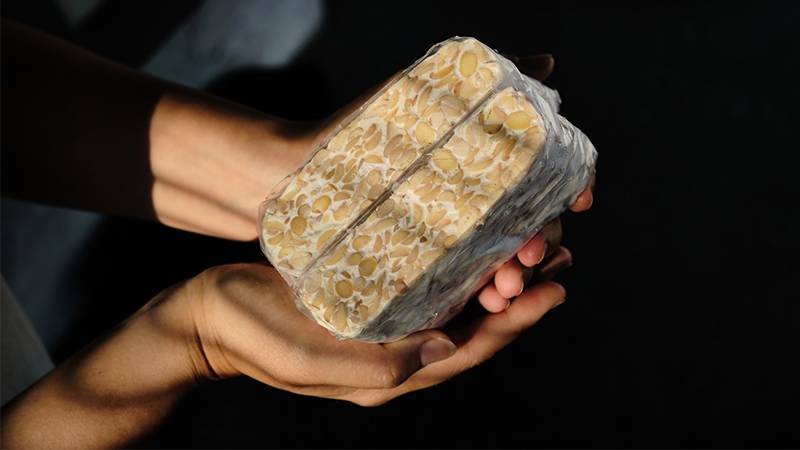
In the world of vegan protein sources, tofu and tempeh often take center stage. While both are soy-based and celebrated in plant-based diets, they differ significantly in texture, nutritional content, and culinary uses.
Texture and Production
Tofu is made from coagulated soy milk and has a smooth, often silky texture. It comes in varying degrees of firmness, from silken to extra-firm. Tempeh, on the other hand, is made from fermented whole soybeans, which are pressed into a firm, dense cake. It has a grainy texture and a nuttier flavor compared to tofu’s neutral taste.
Nutritional Profile
Both tofu and tempeh are excellent sources of protein. However, tempeh, due to its fermentation process, contains more protein and dietary fiber than tofu. It’s also higher in calories and fats (mostly healthy fats) than most types of tofu. The fermentation process of tempeh additionally makes it rich in probiotics and easier to digest for some people.
Culinary Uses
Tofu’s neutral flavor and varying textures make it incredibly versatile in cooking. It can be used in everything from smoothies and desserts to stir-fries and grills. Tempeh, with its firmer texture and richer flavor, is fantastic for hearty dishes. It can be sliced, marinated, and grilled, or crumbled into dishes like chili or tacos as a meat substitute.
When to Use Each
If you’re looking for a protein that will absorb the flavors of your dish, tofu is your go-to. Its versatility in texture also allows for a wide range of culinary applications. Tempeh is ideal when you want a more robust flavor and texture, and it’s excellent for dishes where you’d typically use ground meat.
Conclusion
As we’ve explored, tofu is not just a vegan staple but a versatile, nutritious, and environmentally friendly food. From its rich history to its various types, impressive health benefits, and minimal ecological impact, tofu truly stands out in sustainable eating.
Whether you’re navigating dietary restrictions or simply looking for a delicious, protein-rich addition to your meals, tofu offers something for everyone.
So, why not let your culinary creativity soar? Experiment with tofu in your next meal and discover the endless possibilities it brings to your table. Embrace tofu, and join the journey towards a healthier, more sustainable lifestyle.

